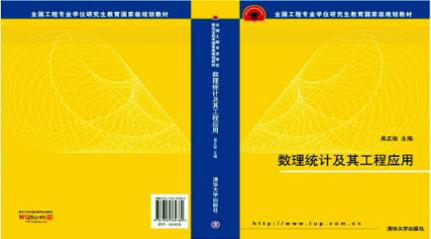
当前课程知识点:Clinical Histology > Chapter12 Reproductive System > Seminiferous Tubules in the Testis > Seminiferous Tubules in the Testis
返回《Clinical Histology》慕课在线视频课程列表
返回《Clinical Histology》慕课在线视频列表
Hello, everyone!
Today we will look at the structures
and functions of the seminiferous tubule
in the testis.
Let's begin with a clinical case.
John 29 years' old and 28-year-old Rose
have been married for 3 years.
They wanted a baby,
but Rose could not get pregnant.
After examination,
doctor told them there were anti-sperm antibodies
in John's blood,
which could be the reason for the infertility.
The questions are,
what is the normal process
and circumstance for the development of sperms?
How does the body normally prevent the production
of anti-sperm antibodies?
At the end of this session,
you should be able to answer above questions,
list the general structures
and functions of the testis,
describe the circumstance
for the development of sperm,
and explain some associated clinical changes.
In the testis,
besides the capsule and septa constituted
by connective tissue,
the main structure of testis
is convoluted seminiferous tubules,
short straight tubules,
and dilated rete testis.
The main functions of the testis
are to produce male gamete-sperms,
and male hormone-androgen.
The seminiferous tubule in the testicular lobules
is the key place for these two functions.
Shown here are the seminiferous tubules
stained by hematoxylin and eosin.
Androgen is produced by the interstitial Leydig cells
found between the seminiferous tubules
while sperms are developed
within the seminiferous tubules.
The lining cells of the seminiferous tubules
comprise the complex stratified
seminiferous epithelia,
with two basic cell populations,
spermatogenic cells and Sertoli cells.
Before puberty,
the spermatogenic cells
are all at the stage of diploid spermatogonia.
After puberty,
the spermatogonia began to undergo differentiation.
From the basal membrane to lumen,
we can find the different developmental stages
of the sperm,
spermatogonium, primary spermatocyte,
secondary spermatocyte, spermatid
and the mature sperm.
The Sertoli cells are not part of
the spermatogenic cell lines,
but they provide support
or nurture the development of sperms.
They are easily identifiable by their nuclei
in hematoxylin and eosin stained slides.
The nucleus is pale and oval to pyramidal in shape,
with one or two prominent nucleoli.
The Sertoli cells have a very extensive
and branching cytoplasmic structure.
Little of its outline can be seen
under light microscope.
However,
the extensive branching nature of its cytoplasm
can be identified under electron microscope.
This diagram shows us
the ultra-microstructure of Sertoli cells,
and their relationship to the wall of the tubule
and to other cells in the seminiferous epithelia.
In this picture,
we can easily identify the cytoplasmic outline
and the tight connection between them.
The connection between adjacent Sertoli cells
divide the wall of the tubules in to 2 parts,
luminal compartment and basal compartment.
The basal compartment,
near the peripheral region,
is sealed off from the luminal compartment
by processes of adjacent Sertoli cells.
The diploid spermatogonia
are found in the basal compartment.
After the spermatogonia start
division and differentiation,
the Sertoli cells send out new processes
to "undermine" the forming primary spermatocytes,
and seal off a new layer below them,
then break the barrier above.
This effectively transfers
the differentiated haploid cells
to the luminal compartment.
Why is this elaborate mechanism
for separating the tubule
into two compartments necessary?
The basal compartment has access to the blood stream
and all the immune components it carries.
The spermatogonia and Sertoli cells
have been there from embryonic stage,
so the immune cells are familiar with them.
When a boy reaches puberty,
the diploid spermatogonium differentiates
into haploid primary spermatocyte,
secondary spermatocyte and so on.
The differentiated haploid cells express
novel proteins on their surfaces.
There is a risk that
the immune system might recognize them as"non-self"
and produce antibodies against them.
So,
for self-protection,
the blood-testis barrier is created
by the junctions of adjacent Sertoli cells.
Maintenance of two separated compartments
allows the different stages of the spermatogenic cells
to exist under optimal conditions.
The blood-testis barrier consists of
the tight junctions between Sertoli cells,
basement membrane of tubules,
interstitial connective tissue,
endothelium, and the capillary basement membrane.
Among the structures of blood-testis barrier,
the tight junction between Sertoli cells
plays the most important role.
However,
the blood-testis barrier can be disrupted
by physical or chemical injury
or by infection.
When this barrier is broken,
differentiated sperm antigens escape from their
immunologically protected environment
and come into contact with blood elements.
That may initiate the lymphocytes
to produce anti-sperm antibodies
which immunologically "attack"
the differentiated haploid cells
in the seminiferous tubules.
Anti-sperm antibodies can be present in many men
without necessarily inducing infertility.
However,
some of them may have reproductive problems,
for example,
John in our case.
Besides being involved in the formation
of blood-testis barrier,
Sertoli cells also have other functions.
Firstly,
the cytoplasm of Sertoli cells
can form a network to provide general support,
protection, and nutritional supply
for sperm development.
Secondly,
they have the function of phagocytosis.
During spermatogenesis,
excess spermatid cytoplasm
is shed off as residual bodies.
These cytoplasmic fragments are phagocytosed
and cleared by Sertoli cells.
The third function of Sertoli cells
is to secrete inhibin, activin, and ABP.
Androgen-binding-protein (ABP),
can serve to concentrate androgen
in the seminiferous tubules,
which is necessary for the development of sperms.
Let's summarize the structures and functions
of the seminiferous tubules in the testis.
Seminiferous tubules are highly convoluted structures
within testicular lobules.
The lining epithelium is mainly composed of
spermatogenic cells
at different developmental stages,
spermatogonium, primary spermatocyte,
secondary spermatocyte, spermatid, and sperm.
The Sertoli cells are also within the
lining epithelium of seminiferous tubule
and play important functions in spermatogenesis.
These are the references for this session.
Thank you for your attention.
-A Brief History of Histology
--A Brief History of Histology
-Test-A Brief History of Histology
-Characteristic Features of Epithelial Tissue
--Characteristic Features of Epithelial Tissue
-Covering Epithelium
-Specialized structures of Epithelial Tissue
--Specialized structures of Epithelial Tissue
-Test-Epithelial Tissue
-Wandering Cells
-Fibers and Ground Substances
--Fibers and Ground Substances
-Cartilage & Bone
-Test-Connective Tissue
-Blood & Hematopoiesis
-Test-Blood & Hematopoiesis
-Skeletal Muscle
-Cardiac Muscle
-Smooth Muscle
-Test-Muscle Tissue
-Myelin
--Myelin
-Cerebellum
-Test-Nerve Tissue and The Nervous System
-Heart
--Heart
-Capillaries
-Test-Circulatory System
-Thyroid
--Thyroid
-Adrenal Cortex
-Test-Endocrine System
-Tongue
--Tongue
-Parietal Cells in Stomach
-Large Intestine
-Liver
--Liver
-Pancreatic Islets
-Test-Digestive System
-From Nasal Cavity to Larynx
-From Trachea to Terminal Bronchiole
--From Trachea to Terminal Bronchiole
-Lung
--Lung
-Test-Respiratory System
-Nephron
--Nephron
-Test-Urinary System
-Seminiferous Tubules in the Testis
--Seminiferous Tubules in the Testis
-Ovarian Follicle
-Test-Reproductive System

